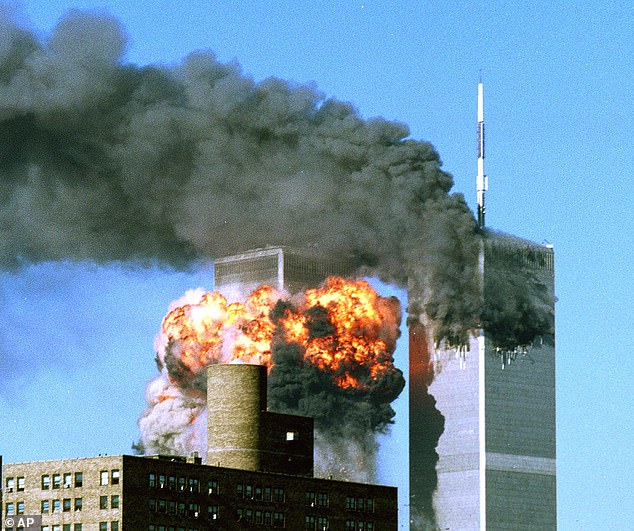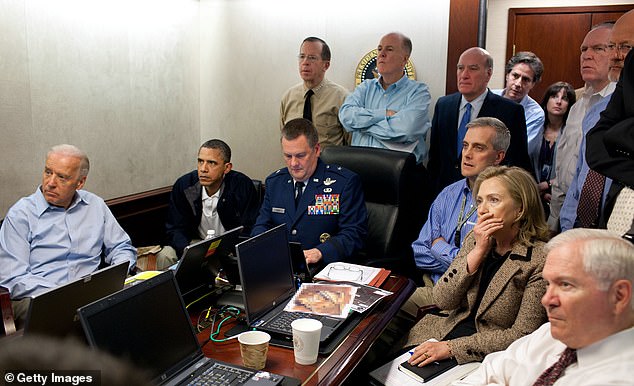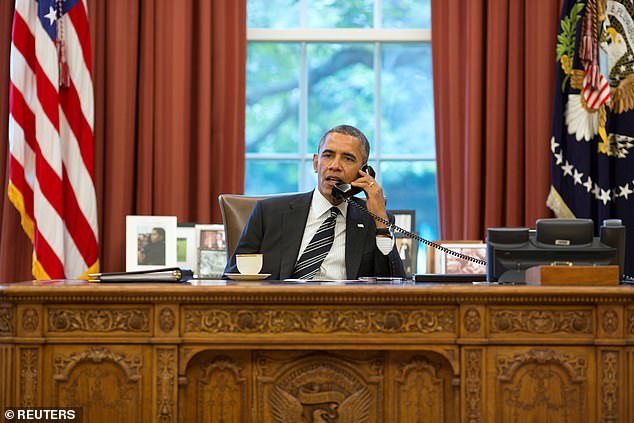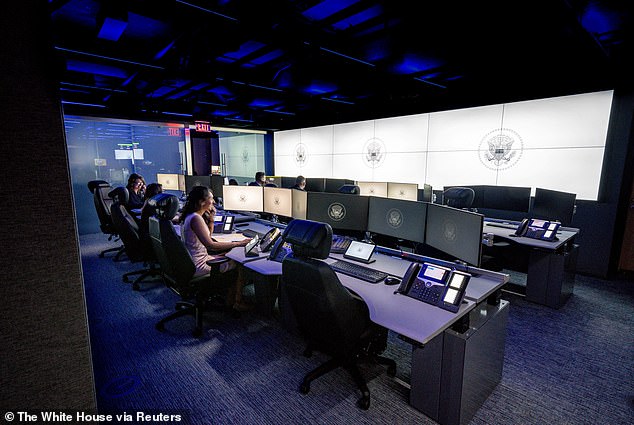Former White House communications director reveals what really happened inside the Situation Room on 9/11
White House insiders have revealed a chilling new detail about what happened in the Situation Room on September 11.
In his book ‘The Situation Room’, George Stephanopoulos, former Clinton aide and now ABC host, tells what happened in the White House on September 11.
According to Stephanopoulos, Frank Miller, the senior director for defense policy, urged everyone to leave the room, but no one did.
Miller took a different approach and had everyone write down their name and social security number, because “we want to know which agencies to look for.”
Early in the terrorist attacks that killed nearly 3,000 people, it was feared that a hijacked plane was also headed for the White House. United 93 crashed into a Pennsylvania field due to a heroic passenger uprising before it could reach its intended destination, the White House at the U.S. Capitol.
Stephanopoulos said everyone inside, about 20 people, complied with Miller’s request.
Frank Miller, the senior director of defense policy, had everyone write down their name and Social Security number because “we want to know what bodies to look for.”

Smoke rises from the top of One World Trade Center and flames and debris explode from Two World Trade Center, Tuesday, September 11, 2001
Stephanopoulos also recalls how the White House in 2008 withdrew plans to move President Obama out of the building during major renovations, over concerns it would look racist.
A White House aide squashed the idea, saying, “We’re not going to take the first black president of the United States out of the Oval Office. That’s not going to happen.”

In his book ‘The Situation Room’, former Clinton adviser and now ABC host George Stephanopoulos revealed what happened in the White House on 9/11
The Situation Room, located in the basement of the West Wing, was renovated last year as part of a $50 million renovation.
Construction workers dug five feet beneath the 55,000-square-foot security complex to install advanced wiring and modernize the facility JFK wanted after the 1961 Bay of Pigs invasion.
The maze of offices, meeting rooms and computer banks has been fitted with new screens, LED lighting, clocks and high-tech communications infrastructure to keep an eye on threats.
While offices with transparent glass can become opaque at the touch of a button.
The modern finishes replace the old floors and furniture that have worn out over the course of more than 50 years as history unfolded.
Donald Trump oversaw the 2019 operation from the room that killed Islamic State leader Abu Bakr al-Baghdadi.
As Barack Obama watched intently as the Navy SEAL raid on Osama Bin Laden, the mastermind behind the 9/11 attacks, ended with his assassination.
In February 2022, President Biden watched as Abu Ibrahim al-Hashimi al-Qurayshi blew himself and his family up in a Syrian safe house during a raid by U.S. forces.

Obama stared intently as he watched the heartbreaking moment the Navy SEAL raid on Osama Bin Laden, the mastermind behind 9/11, ended with his assassination in 2011.

According to Stephanopoulos, President Obama was not asked to leave the White House while it was being renovated because staff felt it would be seen as racist if the first black president were to leave
Access is tightly controlled and generally limited to the president’s national security and military advisers.
Anyone listening in on secret briefings needs permission. Even the contractors who worked on the renovation last year had to get temporary security clearances.
The complex was established in 1961 by the Kennedy administration following the Bay of Pigs invasion.
President John F. Kennedy felt that a special crisis management center should be established where officials could coordinate intelligence more quickly and effectively.
Henry Kissinger, an official in the Nixon administration, described the space as “uncomfortable, unaesthetic, and, in fact, oppressive.”
After 9/11, the White House implemented a major update, along with a broader upgrade of presidential communications equipment on Air Force One and the presidential helicopter.

The complex was established in 1961 by the Kennedy administration after the Bay of Pigs invasion. Employees are seen here in the recently renovated complex
The complex is manned 24 hours a day by military and civilian personnel who closely monitor the latest developments worldwide.
It has a reception area with an American seal in stonework. Behind it is the main conference room, the ‘JFK Room.’
On the right is a smaller conference room and two soundproof breakout rooms. On the left is the watch floor, a 24/7 operations center.
The JFK room has a long wooden table with six leather chairs on each side and one at the headboard for the president. Leather armchairs line the walls.
A giant high-tech screen runs the length of the back wall. A 2-foot (0.6-meter) long seal is placed on the president’s side of the room, larger than the old seal.
